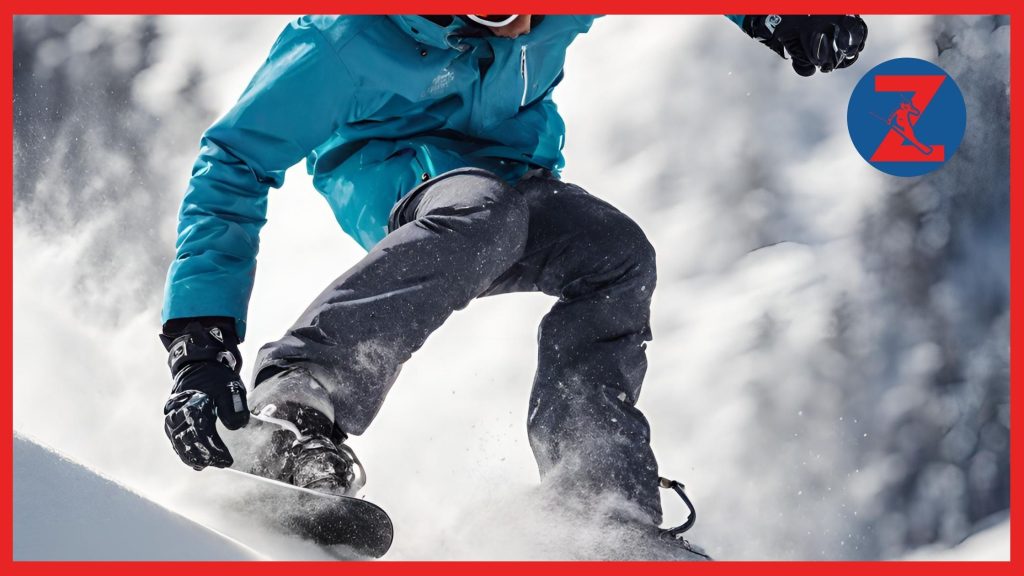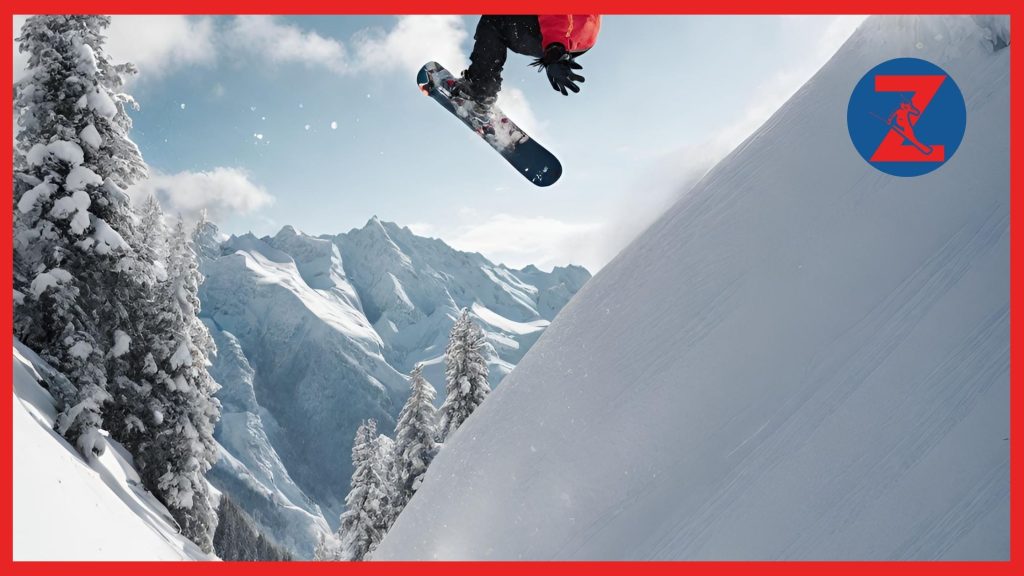Are you aware of the hidden dangers that lurk on the slopes? Do you truly understand the risks involved in snowboarding? It’s time to dive deep into the world of snowboarding injury risks and gain a clear understanding of what it takes to stay safe while enjoying this exhilarating sport.
Each year, countless snowboarders face the potential threat of injuries on the slopes. From broken bones to concussions, the risk of injury in snowboarding is very real. But what are the most common injuries? And more importantly, how can you prevent them?
In this article, we will unravel the mysteries surrounding snowboarding injury risks. We will explore the various types of injuries that can occur and examine the steps you can take to minimize the risk of getting hurt. So, whether you’re a seasoned snowboarder or just getting started, prepare to equip yourself with the knowledge and strategies necessary to have a safe and enjoyable snowboarding experience.
Understanding Common Snowboarding Accidents

When it comes to snowboarding, understanding the most common accidents that can occur is essential for minimizing the risk of injury. By knowing the statistics related to snowboarding injuries and prioritizing safety, enthusiasts can enjoy their time on the slopes more confidently. Let’s take a closer look at the primary causes of these accidents and gain valuable insights to enhance snowboarding experiences.
The Statistics:
According to snowboarding injury statistics, there has been an upward trend in accidents over the years. In fact, snowboarding has consistently ranked among the activities with the highest rates of injury. Every season, thousands of riders experience accidents that range from minor bruises to more severe injuries.
Some common snowboarding accidents include:
- Fractures and dislocations
- Head and spinal injuries
- Knee and ankle sprains
- Wrist and hand injuries
- Shoulder and collarbone injuries
The Primary Causes:
The most common causes of snowboarding accidents can vary, but they often include factors such as:
- Lack of experience or skill
- Excessive speed and loss of control
- Poorly maintained equipment
- Collisions with other snowboarders or objects
- Unfavorable weather conditions
By understanding these common causes, snowboarders can identify areas where they need to exercise caution and take appropriate preventive measures. This knowledge empowers riders to make informed decisions to prevent accidents and injuries.
“Knowing the common accidents that can occur while snowboarding is crucial for riders of all levels. By being aware of the risks and learning from the statistics, we can take proactive steps to protect ourselves and others on the slopes.”
| Common Snowboarding Accidents | Prevalence |
|---|---|
| Fractures and dislocations | 30% |
| Head and spinal injuries | 25% |
| Knee and ankle sprains | 20% |
| Wrist and hand injuries | 15% |
| Shoulder and collarbone injuries | 10% |
Injury Prevention Tips for Snowboarding
When it comes to snowboarding, safety should be a top priority. By following injury prevention tips and using proper safety gear, snowboarders can minimize the risk of accidents and ensure a safer and more enjoyable experience on the slopes.
Essential Safety Measures
Before hitting the slopes, it’s important to familiarize yourself with the basic safety guidelines of snowboarding. Make sure to:
- Always wear a helmet to protect your head from potential injuries.
- Learn and follow the “Responsibility Code” at your local ski resort, which outlines guidelines for safe skiing and snowboarding.
- Observe and respect the trail signs, warnings, and closures to avoid hazardous areas.
- Ride within your ability level and gradually progress to more challenging terrain.
- Be aware of other riders on the slopes and give them plenty of space.
- Stay hydrated and take breaks when needed to avoid fatigue.
Proper Use of Safety Gear
Using the right safety gear can significantly reduce the risk of injuries while snowboarding. Consider the following:
- Wear protective eyewear to shield your eyes from wind, debris, and glare.
- Invest in wrist guards to protect against common wrist injuries.
- Use knee and elbow pads to cushion falls and prevent impact injuries.
- Choose snowboarding boots that provide proper ankle support and a snug fit.
Techniques for Minimizing Risk
In addition to safety measures and gear, there are certain techniques that can help reduce the risk of accidents on the slopes:
- Warm up your body with stretching exercises before each snowboarding session to prepare your muscles and joints.
- Practice proper snowboarding stance and balance to maintain control and stability.
- Learn and master fundamental techniques, such as stopping, turning, and falling safely.
- Avoid riding alone and consider taking lessons from certified snowboarding instructors to improve your skills and knowledge.
- Stay updated on weather conditions and adjust your riding style accordingly to adapt to different snow conditions.
- Listen to your body and take breaks if you start feeling fatigued or strained.
By following these injury prevention tips, snowboarders can enjoy their time on the slopes with peace of mind, knowing they have taken proactive steps to stay safe and avoid common snowboarding injuries.
Understanding the Impact of Snowboarding Terrain

When it comes to snowboarding, the terrain you choose to ride on can have a significant impact on your risk of injury. Different slopes and terrain features present varying challenges that can increase the likelihood of accidents. Understanding these terrain factors and following appropriate safety guidelines is crucial for a safer snowboarding experience.
Snowboarding terrain refers to the natural or man-made features found on a slope that can affect the difficulty, speed, and overall rideability of a run. These features may include moguls, terrain parks, tree runs, and steep descents. Each type of terrain offers its own unique set of challenges and requires specific skills to navigate safely.
Types of Terrain and Their Impact on Injury Risk
Let’s take a closer look at some common types of snowboarding terrain and how they can influence the risk of injuries:
- Groomed Runs: These are well-maintained slopes that offer a smooth and consistent riding surface. Groomed runs are generally considered to be the safest terrain for snowboarding due to their predictable nature.
- Moguls: Moguls are large bumps that form naturally on the slopes. They can be challenging to navigate, as they require quick turns and precise control. Snowboarders who are not proficient in moguls may experience a higher risk of falls and injuries.
- Terrain Parks: Terrain parks are specifically designed areas that feature various jumps, rails, and other freestyle obstacles. While terrain parks can provide a thrilling experience for snowboarders, they also pose an increased risk of injury due to the technical nature of the features.
- Tree Runs: Tree runs are off-piste areas that offer a more adventurous and natural snowboarding experience. However, tree runs present hazards such as hidden obstacles, narrow spaces, and potential collisions with trees, significantly raising the risk of injury.
- Steep Slopes: Steep slopes are characterized by a sharp gradient, requiring advanced skills to maintain control and balance. Snowboarders attempting these challenging descents without the necessary skills and experience may encounter a higher risk of accidents and injuries.
Guidelines for Navigating Snowboarding Terrain Safely
To minimize the risk of injury when encountering different types of terrain, it is essential to follow these snowboarding safety guidelines:
- Always assess the terrain and choose slopes that match your skill level and experience. Don’t attempt advanced terrain beyond your capabilities.
- Take lessons or seek guidance from experienced snowboarders to develop the necessary skills for specific types of terrain.
- Wear appropriate safety gear, including a helmet, goggles, wrist guards, and protective pads, to reduce the impact of falls or collisions.
- Adhere to any posted signs or warnings regarding the specific terrain conditions and follow the instructions of resort staff.
- Ride within your limits and maintain control at all times to avoid accidents caused by excessive speed or loss of balance.
- Stay aware of other riders on the slopes and give them plenty of space to minimize the risk of collisions.
- Stay up-to-date with current snow conditions and weather forecasts to anticipate any changes in terrain conditions.
By understanding the impact of snowboarding terrain and adhering to these safety guidelines, you can enjoy your time on the slopes while reducing the risk of injuries. Remember, safety should always be a top priority when participating in snowboarding activities.
Table: Snowboarding Terrain and Injury Risk
| Terrain Type | Description | Risk of Injury |
| ————- | ————————————————- | ————– |
| Groomed Runs | Well-maintained slopes with a smooth riding surface | Low |
| Moguls | Large bumps that require quick, precise turns | Moderate |
| Terrain Parks | Areas with jumps, rails, and freestyle obstacles | High |
| Tree Runs | Off-piste areas with obstacles and narrow spaces | High |
| Steep Slopes | Sharp gradients requiring advanced skills | Moderate |
The Importance of Physical Fitness in Snowboarding

When it comes to snowboarding, physical fitness plays a crucial role in both performance and injury prevention. Being physically fit not only enhances your snowboarding abilities but also significantly reduces the risk of accidents on the slopes. By conditioning specific muscle groups and improving overall strength and flexibility, snowboarders can enjoy a safer and more enjoyable experience on the mountain.
Physical fitness in snowboarding is particularly important because it requires a unique combination of skills and movements. From quick turns and jumps to navigating varying terrains, snowboarding demands agility, balance, and endurance. By focusing on conditioning exercises that target these areas, athletes can improve their ability to execute snowboarding techniques with precision and control.
Benefits of Conditioning Exercises for Injury Prevention
Conditioning exercises specifically designed for snowboarding help strengthen the key muscle groups involved in the sport and increase overall stability. This targeted conditioning not only lowers the risk of common snowboarding injuries but also improves recovery time if an injury does occur.
One of the most common injuries in snowboarding is a sprained wrist, often caused by falling onto outstretched hands. By incorporating exercises that improve wrist strength and flexibility, such as wrist curls and stretches, snowboarders can significantly reduce the risk of wrist injuries. Similarly, exercises that focus on core strength and stability, such as planks and Russian twists, can protect against back injuries caused by falls or excessive twisting movements.
Another benefit of conditioning exercises is enhanced proprioception and body awareness. Snowboarding requires precise control of body movements, and exercises that target balance and coordination, like single-leg exercises and stability ball exercises, can improve proprioceptive skills, reducing the risk of falls and collisions.
Recommended Conditioning Exercises
To help snowboarders develop the necessary physical fitness for injury prevention, below is a list of recommended conditioning exercises:
- Squats and lunges: Strengthen leg muscles and improve stability
- Balance board exercises: Enhance balance and coordination
- Jumping exercises: Improve explosive power and agility
- Yoga or Pilates: Increase flexibility and core strength
- Cardiovascular exercises: Enhance endurance and stamina
By incorporating these exercises into a regular training routine, snowboarders can improve their overall physical condition and minimize the risk of injuries on the slopes.
| Benefits of Physical Fitness in Snowboarding | Recommended Exercises |
|---|---|
| 1. Reduced risk of injuries By conditioning specific muscle groups and improving overall strength and flexibility, snowboarders can significantly lower the risk of common snowboarding injuries. | – Squats and lunges – Balance board exercises – Jumping exercises – Yoga or Pilates – Cardiovascular exercises |
| 2. Improved performance Physical fitness enhances snowboarding abilities and allows athletes to execute techniques with precision and control. | – Squats and lunges – Jumping exercises – Yoga or Pilates – Cardiovascular exercises |
| 3. Faster recovery time Conditioning exercises improve overall stability and help snowboarders recover more quickly from injuries. | – Squats and lunges – Balance board exercises – Yoga or Pilates – Cardiovascular exercises |
Recognizing and Responding to Snowboarding Injuries
When participating in snowboarding, it’s essential to be aware of the possibility of injuries and know how to respond effectively. By recognizing the signs and symptoms of common snowboarding injuries and taking appropriate action, snowboarders can ensure the best possible outcomes.
Common Snowboarding Injuries
Snowboarding can lead to various types of injuries, ranging from minor sprains to more severe fractures. Some of the most common snowboarding injuries include:
- Ankle sprains
- Wrist fractures
- Shoulder dislocations
- Head and neck injuries
- Knee ligament tears
Recognizing the Signs and Symptoms
Early recognition of snowboarding injuries is crucial for timely and appropriate treatment. Here are some signs and symptoms to watch out for:
- Severe pain or discomfort
- Swelling or bruising
- Inability to bear weight or move the affected body part
- Visible deformity
- Dizziness or loss of consciousness
Immediate Response
If a snowboarder sustains an injury, it’s important to take immediate action to prevent further complications. Here are some recommended steps to follow:
- Assess the severity of the injury.
- Ensure the safety of the injured person and those around them.
- Immobilize the injured area, if possible.
- Elevate the affected limb to reduce swelling, if applicable.
- Apply ice packs or cold compresses to reduce pain and inflammation.
- Seek medical attention promptly.
Medical Attention and Treatment
Seeking medical attention is crucial for proper diagnosis and treatment of snowboarding injuries. Depending on the severity, medical professionals may recommend x-rays, MRIs, or other diagnostic tests to assess the extent of the injury. Treatment options can range from conservative approaches, such as rest, ice, compression, and elevation (RICE), to surgical interventions for more complex injuries.
Overcoming Fear and Building Confidence in Snowboarding
Snowboarding is a thrilling sport that can evoke a range of emotions, including fear and anxiety, especially for beginners. However, with the right strategies and mental preparation, individuals can overcome these fears and build confidence on the slopes. By doing so, they not only enhance their overall enjoyment but also reduce the risk of accidents and injuries.
To overcome fear in snowboarding, it is important to understand the root causes of that fear. Whether it is the fear of falling, losing control, or getting injured, acknowledging these fears is the first step towards conquering them. By identifying specific fears, individuals can develop targeted strategies to address those concerns and gradually build confidence.
Mental preparation plays a crucial role in overcoming fear and building confidence. Visualization techniques, where individuals imagine themselves performing snowboarding tricks and maneuvers with ease and control, are effective in boosting confidence. By mentally rehearsing different scenarios and visualizing successful outcomes, snowboarders can condition their minds to stay calm and in control, even in challenging situations. Moreover, engaging in positive self-talk and affirmations can further reinforce a sense of confidence and self-belief.
Another valuable strategy for overcoming fear is to gradually expose oneself to increasingly challenging snowboarding terrains and obstacles. By starting with easier slopes and gradually progressing to more difficult trails, individuals can gradually build their skills and confidence. This progressive approach allows them to push their limits in a controlled manner, gradually expanding their comfort zone while developing trust in their abilities.
Seeking guidance and instruction from experienced snowboarding instructors or coaches can also be immensely helpful in overcoming fear and building confidence. These professionals can provide valuable tips and techniques and offer guidance on proper snowboarding form and techniques, ultimately instilling confidence through knowledge and skill development.
Remember, building confidence in snowboarding is a journey that requires patience and perseverance. It is normal to feel fear, especially when trying new tricks or tackling more challenging terrains. However, by adopting these strategies and techniques, individuals can gradually overcome their fears and develop the confidence needed to truly enjoy the exhilaration of snowboarding.
Conclusion
In conclusion, minimizing injury risk in snowboarding is essential for a safe and enjoyable experience on the slopes. By following snowboarding safety tips and guidelines, riders can significantly reduce the likelihood of accidents and injuries.
Throughout this article, we have examined the various aspects of snowboarding injury prevention, including understanding common snowboarding accidents, the impact of snowboarding terrain, the importance of physical fitness, and recognizing and responding to injuries. Additionally, we have explored strategies for overcoming fear and building confidence in snowboarding.
By prioritizing injury prevention and adopting a safety-conscious approach, snowboarders can minimize their risk. This includes wearing appropriate safety gear, following proper riding techniques, and staying alert to changing conditions. Regular conditioning exercises and maintaining physical fitness are also crucial in reducing the likelihood of injuries on the slopes.
Remember, snowboarding is a thrilling sport, but safety should always be a top priority. By incorporating these snowboarding safety tips into your practice and being mindful of minimizing injury risks, you can have a memorable and injury-free snowboarding experience.
FAQ
Q: What are the risk of injury in snowboarding?
A: Snowboarding carries various injury risks, including fractures, sprains, concussions, and dislocations. Factors such as jumps, tricks, high speeds, and collisions with objects or other riders can increase the likelihood of injury.
Q: How can I prevent injuries while snowboarding?
A: To reduce the risk of injuries, you should wear proper safety gear such as helmets, goggles, wrist guards, and padding. Additionally, it’s important to undergo proper training, warm up before hitting the slopes, use correct techniques, and avoid pushing beyond your skill level.
Q: What are some common snowboarding accidents?
A: Common snowboarding accidents include falls, collisions, hitting objects (such as trees or rocks), and overexertion. It’s crucial to be aware of these risks and take appropriate precautions to prevent accidents.
Q: How can the impact of snowboarding terrain affect injury risk?
A: Different types of slopes and terrain, such as icy surfaces, moguls, and steep slopes, can increase the likelihood of accidents and injuries. It’s essential to familiarize yourself with the terrain, follow safety guidelines, and adjust your riding style accordingly to minimize risk.
Q: How does physical fitness contribute to injury prevention in snowboarding?
A: Being physically fit is important for snowboarding as it helps improve balance, agility, and overall strength. Conditioning exercises targeting core muscles, lower body stability, and cardiovascular fitness can reduce the risk of injury and enhance performance.
Q: What should I do if I sustain a snowboarding injury?
A: If you sustain a snowboarding injury, stop riding and assess the severity of the injury. Seek medical attention if necessary and follow RICE principles (Rest, Ice, Compression, Elevation) for acute injuries. It’s crucial to listen to your body and give yourself time to recover before returning to the slopes.
Q: How can I overcome fear and build confidence in snowboarding?
A: Overcoming fear and building confidence in snowboarding requires a combination of mental preparation, practice, and gradual progression. Setting realistic goals, visualizing success, using positive affirmations, and seeking guidance from experienced riders can help you overcome fear and develop confidence on the slopes.






